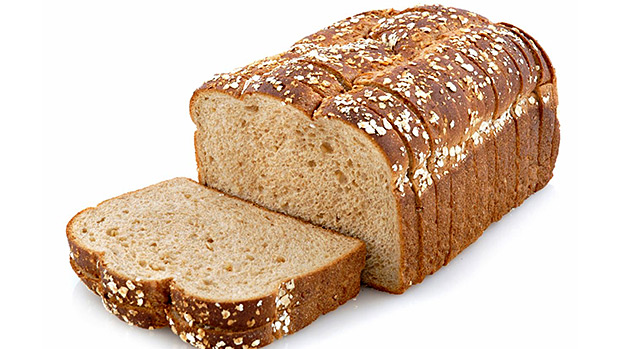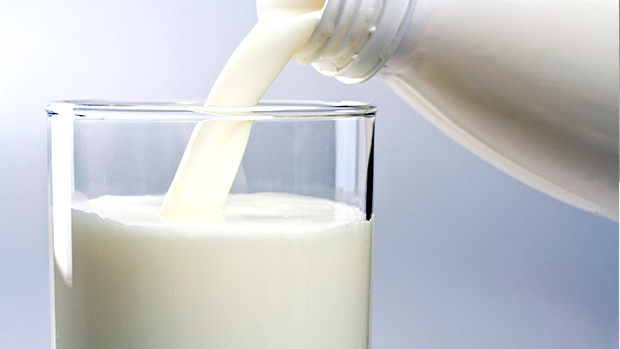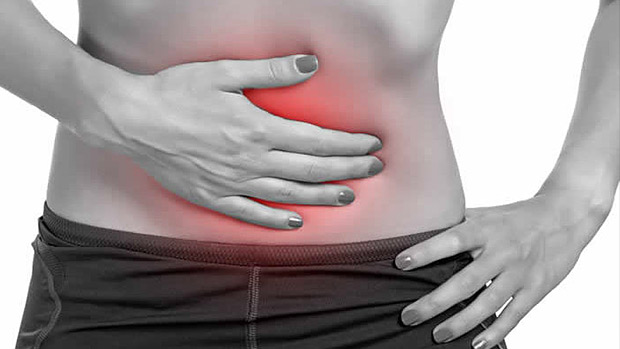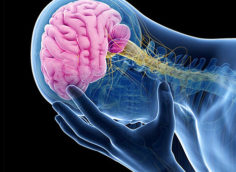Wheat, Dairy, Sugar, and Soy
If you just focus on macros or calories, these foods don't seem like a big problem. Just consume them in the right amounts, right? Well, not so fast.
Sure, their nutrition labels might tell you that whole grain pasta is a great source of fiber; that standard milk is a great source of calcium and a complete protein; that sugar can replenish your glycogen stores; and that soy is a complete source of protein.
But their nutrition labels don't tell the whole story. These substances can be an issue – a big one – and possibly the reason you're not achieving the results you want or are suffering constant digestive issues.
If these things prevent your gut from functioning properly, then you won't be able to completely digest and absorb what you're consuming. As a result, the food that enters our body can either be stored as fat or treated as an allergen, leading to low-grade inflammation and a host of metabolic issues (1).
Here are the four biggest irritants and how your body may be reacting to them.

Gluten is a divisive issue. Many believe that unless you have celiac disease, it's nothing to worry about, and avoiding it is just a fad. But recent research has shown that most of us would be better off avoiding gluten and its wheat-protein cousin, gliadin.
If you just look at the numbers, there isn't much of a difference between pasta and rice. Both have about 130 calories, 25 grams of carbohydrates, a gram of fat, and very little in the way of vitamins. However, wheat pasta contains gluten and gliadin. More and more studies are showing how both contribute to the release of something called "zonulin," a protein that modulates the permeability of tight junctions between cells of the wall of the digestive tract. (2, 3).
Researchers are finding that zonulin opens up the spaces between the cells of the intestinal lining, a problem associated with autoimmune diseases and cancer (2, 4, 5, 6, 7). These spaces are indeed supposed to open up naturally, but zonulin basically causes them to open up too much.
If you think about our intestinal lining as a pipeline, zonulin puts big holes in it, allowing substances into parts of our body they don't belong, causing hosts of problems such as allergic reactions.
It doesn't matter if you're celiac or not. This is how our bodies are responding to the wheat we're eating today. Our bodies look at certain components of wheat as a harmful substances, like bad bacteria, and zonulin is released to open up the tight junctions in our intestinal lining (2).
If we're able to keep a strong and intact intestinal lining then we can keep food where it's meant to be, optimizing digestion and limiting any adverse food reactions. This is likely a huge reason why so many people that are non-celiac are going gluten-free – because they feel and perform better without wheat and other gluten-containing foods (8).

Unfermented dairy (regular milk for example) can also cause us a variety of problems due to the difficulty we have breaking down and digesting the sugar and protein, specifically lactose and casein (9,10). Research has linked excess dairy consumption to fat gain, insulin resistance, acne, osteoporosis, and diseases such as multiple sclerosis (11, 12, 13, 14, 15, 16).
Most people don't think of milk as being high in sugar, but it is. In just one cup of milk there can be 13 grams of sugar, which is one reason you may have a better time tolerating yogurt and kefir – the fermentation process breaks down these sugars into beneficial bacteria, making dairy much easier to digest (17).
Even though milk is a great source of whey and casein protein, if we aren't able to digest and absorb these proteins properly then they're of no use to us and can cause us more harm than good.
You may be wondering, why were we brought up on human breast milk but now cow milk isn't agreeing with us? Well, they're composed of different percentages of whey and casein proteins. Human breast milk is 80 percent whey and 20 percent casein while cow milk is 20 percent whey and 80 percent casein, making cow milk more difficult for us to digest (18).
And if the body isn't able to break down and assimilate what's ingested, then we can't put nutrients to work rebuilding our body after a great training session. Interestingly, the popular idea of post-workout chocolate milk was meant to promote muscle protein synthesis and replenish glycogen stores because it's a fast acting carbohydrate and a protein source, but because it's more difficult to digest, it's probably not the best idea.

Well, this one is obvious, unless you own a soft drink company. But there's more to the story.
Overconsumption of sugar and other refined carbohydrates can lead to a whole host of issues from diabetes to bacterial overgrowth (19). A major epidemic right now is the prevalence of candidiasis, otherwise known as a yeast overgrowth (20).
When we take antibiotics, they wipe out our entire microbiome, leaving no good or bad bacteria. If we don't replenish our microbiome with good bacteria from probiotics, then this leaves a breeding ground for yeast and other harmful bacteria to prosper (21, 22).
This is why many people suffer from gastrointestinal issues after being prescribed antibiotics (23). The intake of sugar/refined carbohydrates feed these harmful bacteria (19), which, among other things, can lead to cravings for MORE sugar and refined carbs.
We need an abundance of good bacteria in our large intestine, and when we have more bad bacteria than good, we'll have a difficult time using the food we eat. If this is the case, no matter how high of a quality of protein we eat, we won't get the benefits that we would if our digestion was functioning properly (24).

Similar to these other foods, soy can wreak havoc on our gut lining, specifically resulting in impaired thyroid function (25). Phytoestrogens found in soy products can also disrupt sex hormones. This has been shown to affect ovulation, lower testosterone in men, and decrease fertility in animals (26, 27, 28).
Even though it's a complete protein, soy has very low amounts of the essential amino acids tryptophan and methionine, making it a very low-level complete protein (29).
If you have soy isolate in your protein shake, the way it's processed can make it even more of a problem. The heat damages the amino acids, further lessening the bioavailability of the protein (30). The amino acid, cysteine, is damaged during the heating process. Cysteine is responsible for supporting glutathione, an antioxidant which is found in high amounts in humans that live the longest (31, 32).
In the United States many have turned soy into a primary source of protein, whereas in Asia it has always been more like a condiment, such as soy sauce or a small piece of tofu in a stir fry. On paper, soy looks great for us with its fiber and protein content. But it's extremely difficult to digest, which makes it more of an irritant than nourishment (33).
- Cani, P. D., & Delzenne, N. M. (2009). Interplay between obesity and associated metabolic disorders: new insights into the gut microbiota. Current opinion in pharmacology, 9(6), 737-743.
- Fasano, A. (2012). Zonulin, regulation of tight junctions, and autoimmune diseases. Annals of the New York Academy of Sciences, 1258(1), 25-33.
- Simpson, M., Mojibian, M., Barriga, K., Scott, F.W., Fasano, A., Rewers, M., and Norris, J.M. (2009). An exploration of Glb1 homologue antibody levels in children at increased risk for type 1 diabetes mellitus. Pediatric Diabetes, 10(8), 563.
- Di Pierro, M., Lu, R., Uzzau, S., Wang, W., Margaretten, K., Pazzani, C., ... & Fasano, A. (2001). Zonula occludens toxin structure-function analysis: identification of the fragment biologically active on tight junctions and of the zonulin receptor binding domain. Journal of Biological Chemistry.
- Fasano, A., Fiorentini, C., Donelli, G., Uzzau, S., Kaper, J. B., Margaretten, K., ... & Goldblum, S. E. (1995). Zonula occludens toxin modulates tight junctions through protein kinase C-dependent actin reorganization, in vitro. The Journal of clinical investigation, 96(2), 710-720.
- Fasano, A. (2011). Zonulin and its regulation of intestinal barrier function: the biological door to inflammation, autoimmunity, and cancer. Physiological reviews, 91(1), 151-175.
- Wang, W., Uzzau, S., Goldblum, S. E., & Fasano, A. (2000). Human zonulin, a potential modulator of intestinal tight junctions. Journal of cell science, 113(24), 4435-4440.
- Bronski, P., & Jory, M. M. (2012). The Gluten-Free Edge: A Nutrition and Training Guide for Peak Athletic Performance and an Active Gluten-Free Life. The Experiment.
- Swallow, D. M. (2003). Genetics of lactase persistence and lactose intolerance. Annual review of genetics, 37(1), 197-219.
- Chabance, B., Marteau, P., Rambaud, J. C., Migliore-Samour, D., Boynard, M., Perrotin, P., ... & Fiat, A. M. (1998). Casein peptide release and passage to the blood in humans during digestion of milk or yogurt. Biochimie, 80(2), 155-165.
- Adebamowo, C. A., Spiegelman, D., Danby, F. W., Frazier, A. L., Willett, W. C., & Holmes, M. D. (2005). High school dietary dairy intake and teenage acne. Journal of the American Academy of Dermatology, 52(2), 207-214.
- Barr, S. I. (2003). Increased dairy product or calcium intake: is body weight or composition affected in humans?. The Journal of nutrition, 133(1), 245S-248S.
- Berkey, C. S., Rockett, H. R., Willett, W. C., & Colditz, G. A. (2005). Milk, dairy fat, dietary calcium, and weight gain: a longitudinal study of adolescents. Archives of pediatrics & adolescent medicine, 159(6), 543-550.
- Feskanich, D., Willett, W. C., Stampfer, M. J., & Colditz, G. A. (1997). Milk, dietary calcium, and bone fractures in women: a 12-year prospective study. American journal of public health, 87(6), 992-997.
- Malosse, D., Perron, H., Sasco, A., & Seigneurin, J. M. (1992). Correlation between milk and dairy product consumption and multiple sclerosis prevalence: a worldwide study. Neuroepidemiology, 11(4-6), 304-312.
- Turner, K. M., Keogh, J. B., & Clifton, P. M. (2015). Red meat, dairy, and insulin sensitivity: a randomized crossover intervention study–. The American journal of clinical nutrition, 101(6), 1173-1179.
- Gupta, S., & Abu-Ghannam, N. (2012). Probiotic fermentation of plant based products: possibilities and opportunities. Critical reviews in food science and nutrition, 52(2), 183-199.
- Martin, C. R., Ling, P. R., & Blackburn, G. L. (2016). Review of infant feeding: key features of breast milk and infant formula. Nutrients, 8(5), 279.
- Jackson, J. A., Riordan, H. D., Hunninghake, R., & Revard, C. (1999). Candida albicans: the hidden infection. J Orthomol Med, 14(4), 198-200.
- Sardi, J. C. O., Scorzoni, L., Bernardi, T., Fusco-Almeida, A. M., & Giannini, M. M. (2013). Candida species: current epidemiology, pathogenicity, biofilm formation, natural antifungal products and new therapeutic options. Journal of medical microbiology, 62(1), 10-24.
- Horn, D. L., Neofytos, D., Anaissie, E. J., Fishman, J. A., Steinbach, W. J., Olyaei, A. J., ... & Webster, K. M. (2009). Epidemiology and outcomes of candidemia in 2019 patients: data from the prospective antifungal therapy alliance registry. Clinical infectious diseases, 48(12), 1695-1703.
- Ortega, M., Marco, F., Soriano, A., Almela, M., Martínez, J. A., López, J., ... & Mensa, J. (2011). Candida species bloodstream infection: epidemiology and outcome in a single institution from 1991 to 2008. Journal of Hospital Infection, 77(2), 157-161.
- Jernberg, C., Löfmark, S., Edlund, C., & Jansson, J. K. (2010). Long-term impacts of antibiotic exposure on the human intestinal microbiota. Microbiology, 156(11), 3216-3223.
- Jandhyala, S. M., Talukdar, R., Subramanyam, C., Vuyyuru, H., Sasikala, M., & Reddy, D. N. (2015). Role of the normal gut microbiota. World journal of gastroenterology: WJG, 21(29), 8787.
- Doerge, D. R., & Chang, H. C. (2002). Inactivation of thyroid peroxidase by soy isoflavones, in vitro and in vivo. Journal of Chromatography B, 777(1-2), 269-279.
- Chavarro, J. E., Toth, T. L., Sadio, S. M., & Hauser, R. (2008). Soy food and isoflavone intake in relation to semen quality parameters among men from an infertility clinic. Human reproduction, 23(11), 2584-2590.
- Jefferson, W. N. (2010). Adult Ovarian Function Can Be Affected by High Levels of Soy, 2. The Journal of nutrition, 140(12), 2322S-2325S.
- Weber, K. S., Setchell, K. D., Stocco, D. M., & Lephart, E. D. (2001). Dietary soy-phytoestrogens decrease testosterone levels and prostate weight without altering LH, prostate 5alpha-reductase or testicular steroidogenic acute regulatory peptide levels in adult male Sprague-Dawley rats. Journal of Endocrinology, 170(3), 591-599.
- Kuiken, K. A., & Lyman, C. M. (1949). Essential amino acid composition of soy bean meals prepared from twenty strains of soy beans. J Biol Chem, 177, 29-36.
- Mariotti, F., Mahe, S., Benamouzig, R., Luengo, C., Dare, S., Gaudichon, C., & Tome_, D. (1999). Nutritional value of [15N]-soy protein isolate assessed from ileal digestibility and postprandial protein utilization in humans. The Journal of nutrition, 129(11), 1992-1997.
- Alhamdan, A. A., & Alsaif, A. A. (2011). The nutritional, glutathione and oxidant status of elderly subjects admitted to a university hospital. Saudi journal of gastroenterology: official journal of the Saudi Gastroenterology Association, 17(1), 58.
- Lokuruka, M. N. (2011). Effects of processing on soybean nutrients and potential impact on consumer health: an overview. African Journal of Food, Agriculture, Nutrition and Development, 11(4).
- D'Adamo, C. R., & Sahin, A. (2014). Soy foods and supplementation: a review of commonly perceived health benefits and risks. Alternative Therapies in Health & Medicine, 20.





